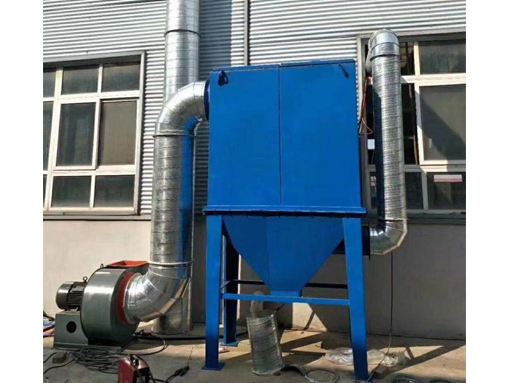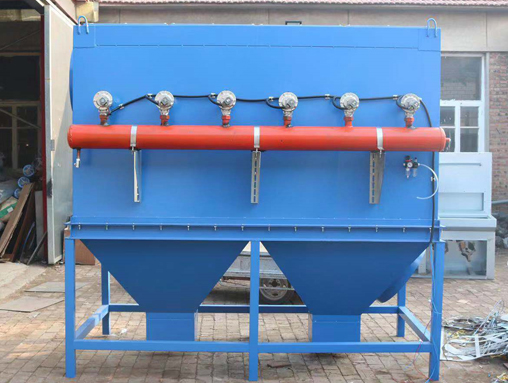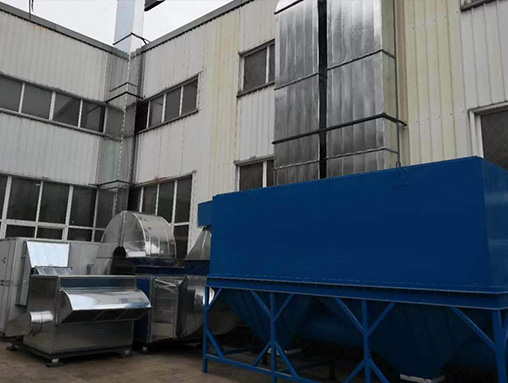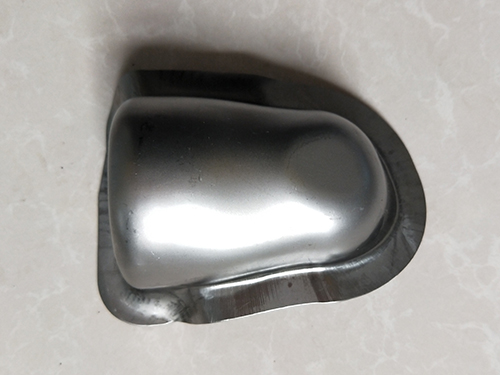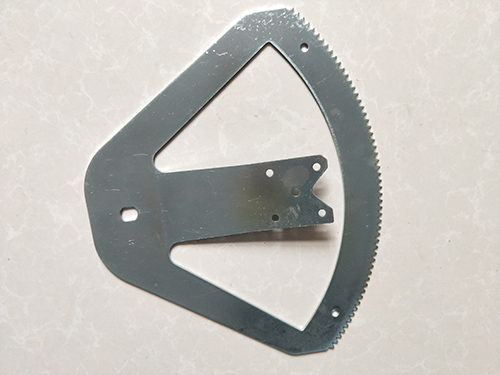The Current Status, Development, and Qualitative Evaluation of Automotive Brake
The automobile industry is an important pillar industry in China, characterized by high input, high output, increasing economies of scale, high industrial interdependence, and strong economic driving force. It is a typical capital and technology intensive industry that has a driving force for the sustained growth of the Chinese economy. China is gradually becoming an emerging automobile production base, and the automobile industry has become an important carrier for China to achieve new industrialization. The history of industrialization development in various countries around the world has proven that in the middle stage of industrialization, from the middle stage to the completion of industrialization and modernization, no major country does not rely on the rapid development of the automotive industry to complete this process. Starting from the specific situation in our country and based on the current situation and existing problems of the automotive industry, it is of great practical significance to study and formulate targeted and feasible countermeasures, seize opportunities, seek benefits and avoid disadvantages, accelerate development, and enhance the technological and market competitiveness of China's automotive industry. Therefore, at the current stage of China's economic development, studying the development of the automotive industry is particularly important.
1、 The current situation of the automotive industry
The automotive industry has a long industrial chain, and from the production process of products, there is a huge demand for steel, non-ferrous metals, components, and other materials in the automotive industry. Currently, 15% of the world's steel production, 25% of aluminum production, 50% of rubber products, and 10% of plastic production are used in the automotive industry. However, it is an undeniable fact that China's automobile industry has a short industrial chain, low correlation, and weak driving force. For example, although the production capacity of finished steel products will exceed 200 million tons in 2003, making China a major producer of steel in the world, many automobile joint ventures in China still require a large amount of steel; Although there are over 3900 automobile and motorcycle parts and accessories factories in China, many automotive parts require large quantities from overseas.
There are over 120 automobile manufacturers located in 27 provinces, autonomous regions, and municipalities directly under the central government. Only two companies (FAW Group and SAIC Group) have a production capacity exceeding 500000 vehicles. In 2003, the automobile production of FAW Group and SAIC Group were 858700 and 797000 respectively, while Dongfeng Group, ranked third in the automotive industry, had an annual production of only 473000 vehicles. The major giants in the world's automotive industry have an annual production capacity of at least 4 million vehicles, while the total output of China's automotive industry was only about 4.4437 million vehicles in 2003, and it is expected to reach 10 million vehicles in 2010. In terms of controlling relationships, although dozens of automobile factories have entered the three major automobile groups of FAW, Dongfeng, and SAIC, overall, the organizational structure of China's automobile industry is still relatively scattered. In terms of individual enterprise scale, the top three automobile companies in China, FAW, SAIC, and Dongfeng Motor Group, have production capacities ranging from 450000 to 900000 vehicles, and economies of scale are beginning to emerge. However, compared with automobile manufacturing enterprises, the scale of China's automobile industry enterprises is still relatively small. Hyundai Motor Corporation, which ranks lower among the world's major automobile companies, has a production capacity of 2.5 million vehicles. In terms of Asia, China also lacks influential automotive companies.
2、 Evaluation and Optimization of Brake Pedal Feeling
With the increasing attention of regulations and users to vehicle performance, the matching of braking performance has become particularly important. During the braking process, the pedal force and pedal bracket applied by the driver; The dynamic characteristics between the travel taken and the deceleration performance feedback from the car constitute the brake pedal feel.
(1) Brake pedal sensation evaluation
1. Subjective evaluation
Subjective evaluation mainly includes qualitative evaluation and quantitative evaluation. Qualitative evaluation ranks several evaluation objects based on their strengths and weaknesses, while quantitative evaluation compares evaluation objectives through scoring.
2. Objective evaluation
Subjective evaluation relies on human perception, and human senses cannot be quantified using a unified standard. Therefore, it is important to objectively evaluate the pedal feel.
Among them, the preset force of the pedal is the operating force that causes the pedal to start displacement; The initial pedal force and pedal stroke correspond to the pedal force and pedal stroke when the deceleration of the vehicle is greater than the coasting deceleration by 0.05g; Taking the initial braking point as the zero point, the pedal force value at the moment when the vehicle decelerates to 0.5g minus the pedal force value at the initial braking point is the normal pedal force when braking to 0.5g. Similarly, the corresponding pedal stroke can be determined; The linearity of pedal force is the linear ratio between pedal force and vehicle deceleration; The pedal force at full load deceleration refers to the brake pedal force corresponding to the braking deceleration that the vehicle can obtain when the ABS is not yet activated during full load braking. The higher the overall score of objective evaluation, the better the pedal feel of the vehicle model.
(2) Optimization of brake pedal feel
The main factors affecting brake pedal force include braking efficiency, master cylinder wheel cylinder diameter, pedal lever ratio, booster assist ratio, booster initial force and jump value, and transmission efficiency. Optimizing pedal force can be achieved by adjusting structural performance parameters such as pedal lever ratio, optimizing booster assist ratio, increasing vacuum degree, adjusting the ratio of master cylinder to wheel cylinder cross-sectional area, adjusting the efficiency factor and braking radius of the brake. When adjusting parameters such as brake pedal lever ratio, master cylinder and wheel cylinder diameter, it will result in changes in brake pedal force and pedal stroke, and comprehensive analysis is required in actual matching optimization.
The main reasons that affect the working stroke of the pedal are the working stroke of the master cylinder, the gap between the booster and the master cylinder, etc. Optimizing pedal stroke can be achieved by changing the pedal lever ratio, reducing the idle stroke and clearance of components such as the booster and master cylinder, adjusting the diameter of the master cylinder and wheel cylinder, increasing the rigidity of the brake caliper, improving the compression performance of the brake pad, and selecting low expansion brake hoses.
The level and experience of commercial vehicle capabilities in China's automotive industry have a gap of 5-10 years compared to the world level. On the basis of product serialization, Chinese automotive industry enterprises can already launch a large number of new products every year. Taking Dongfeng Motor Corporation as an example, 1215 new product applications were completed from 2000 to 2001. Chinese automobile industry enterprises are already capable of designing certain sedan bodies, but they do not yet have mature and comprehensive sedan capabilities. The main responsibility of China's major car manufacturers in new products is to localize the models of multinational companies, enhance the upgrading and improvement capabilities of certain products, and participate in certain joint designs. Due to the lack of complete car autonomy, China's main car products do not have their own intellectual property rights, which is very dangerous for the development of China's automotive industry.
In terms of technology for automotive components, Chinese automotive industry enterprises have the ability to produce certain low - and medium value added products; Has the ability in the technology of key automotive components, but there is a significant gap compared to the level. Many key components are simply replicas of foreign products. Taking automotive engines as an example, the emissions of engines produced by Chinese automotive parts companies can only meet Euro 2 standards, while developed ones already meet Euro 4 standards. The engines mass-produced by Chinese automotive parts companies are only equivalent to the level of the 1990s.
It should be pointed out that in terms of the development of fuel cell vehicles, the core technology that determines the competition in the automotive industry in the 21st century, from the perspective of supporting research, China's automotive industry is almost at the same level as developed automotive industries. If we can grasp the competitive path at the industrialization level, China's automotive industry may achieve breakthroughs in engine development.
